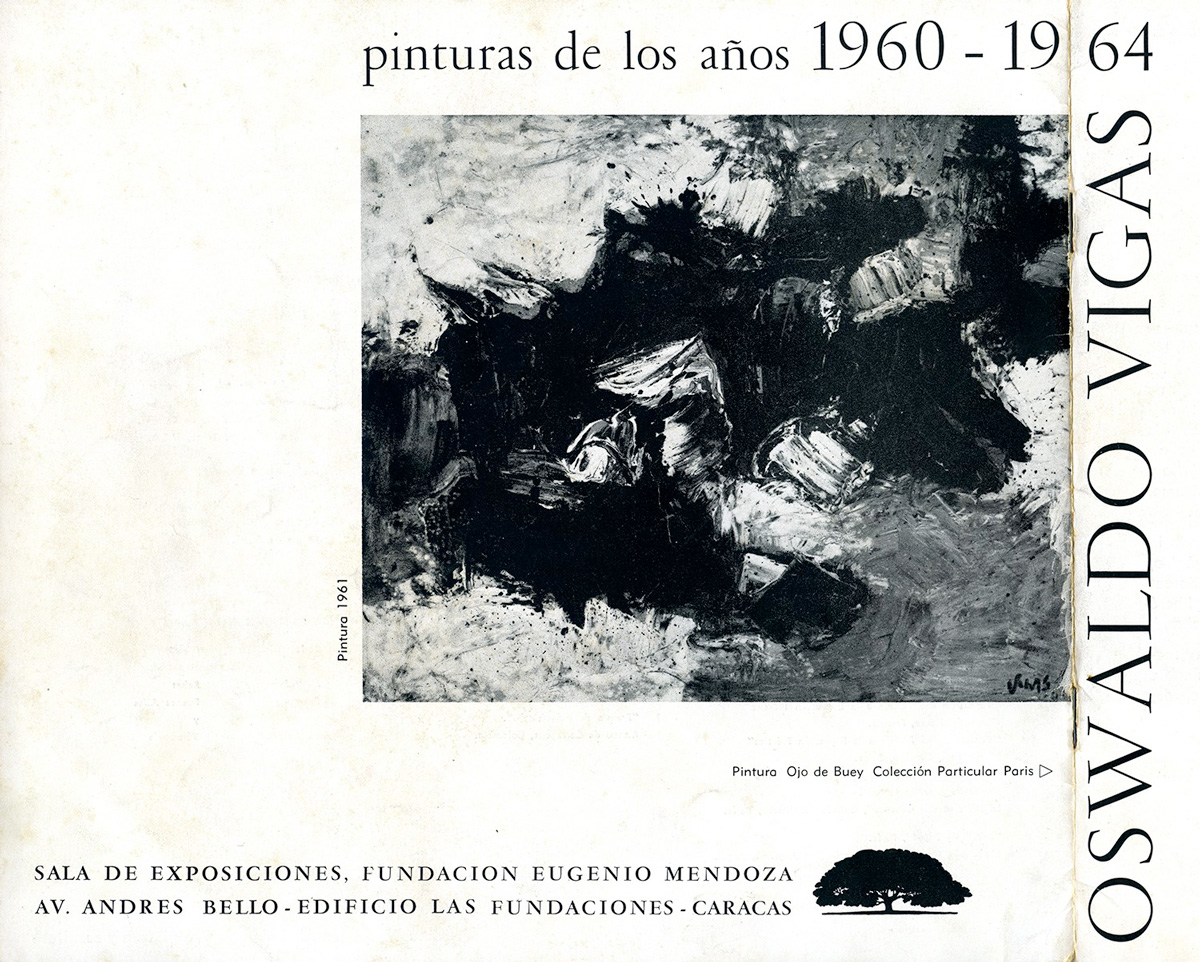Oswaldo Vigas, pinturas de los años 1960-1964
Eugenio Mendoza Foundation Exhibition Room, Caracas, Venezuela
1964
Raoul Jean Moulin. Paris 1964
- In 1956, the first Vigas exhibition in Paris was an evidence of the essentials of a trade: a seduction of materials worked with detail, a discipline of static and defined shapes. Closed in itself, this painting could not do anything but react.
- His counter-attack was one of extreme violence. The fabric lightened, the color became illuminated, the structures disappeared. A space emerged from the dominated matter, leading to all discoveries and widely open to the light. Since then, life became possible: he seized the smallest colored shiver, while concentrating his most active strenghts in some areas of tension. So, conflicts progressively bursted into this space, and they would disrupt this stripped and transparent view of the universe.
- A chromatic turmoil invaded his expressive field, forcing him to a permanent control of his means. Facing reality in the contradictions of its organic development, Vigas suddenly appreciated the potential capacity of his creative power; he became aware of the originality of his language, he released his own personality.
- The gesture today is not satisfied of his rebellion. Through concerted offensives, which are other conquests on himself, Vigas organizes his action. He requires of his raw color, in a lashing, a natural power, a full proof virulence. He enhances his work and carries out the objectives set, striving to define, always better, the sense of his search and the momentum that makes him act.
- If passion and violence characterize Latin American art as a whole, both take particular dimensions on the painting of the Venezuelan Oswaldo Vigas, which meanings we should not escape. It is not really about concepts intended to provide some depth to the gratuitousness of a purely technical exercise, but about an effective passion and violence in the creative work, in the act of painting itself, considered as a means of knowledge and communication among men.
- With Vigas, the artistic activity does not have the simple pleasure of the senses as its exclusive purpose, but it is instead the expression of a personality, a willingness to act on the world to master its forces and better be done. For his physical gesture, the painter faces nature, he appropriates reality in the complexity of its dialectical movement and comes into revolution. The brilliance of his coloring, the intensity and the decision of his writing and the deaf thrusts of his constantly evolving matter, create compelling dramatic tensions that Vigas maintains and elevates to the extreme limit of their resonances, because he clearly knows what he wants. The fiery outburst of his expression is not a game or style, but the resolute action of a man through the tumultuous reality of the new world, the hard and slow conquest of freedom.
- Do not be afraid to face this painting: it is not complacient and it spares us no detail. It is rooted in us and tears us when delivering us the contradictory image of our life, a non-immutable image, sensitive to the man beats and therefore it arms us to live better.
- A direct painting, without ornament or prose that forces man to act, to become aware of his strength, and with which we participate in the manifestation of a worldview linked to a moral of the action.


